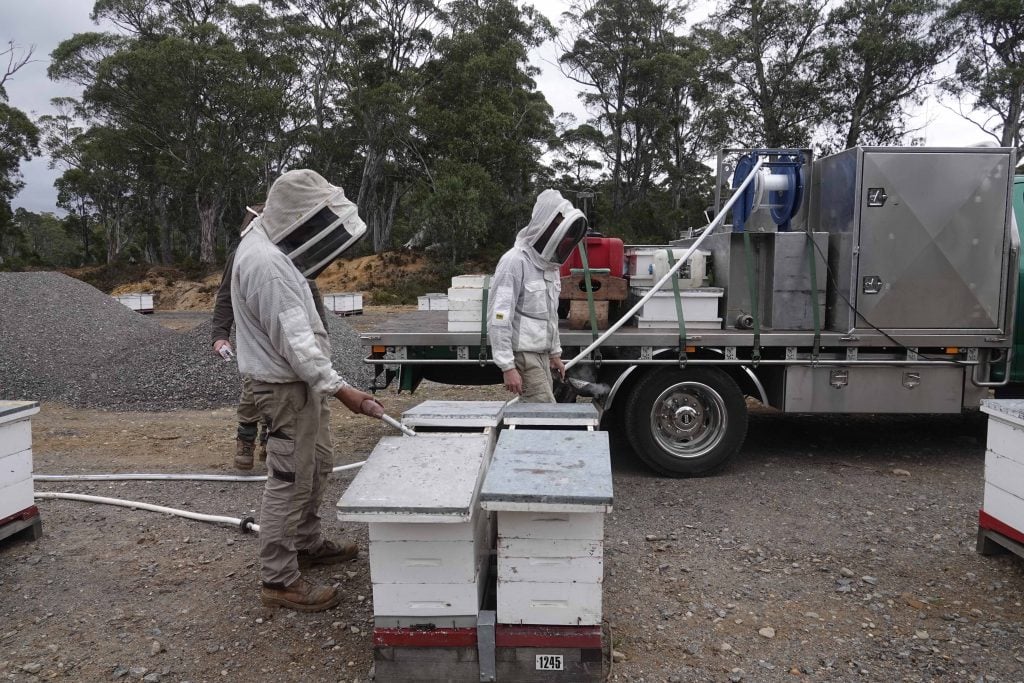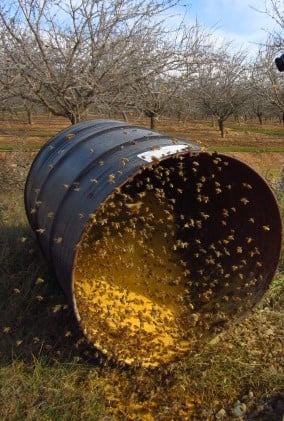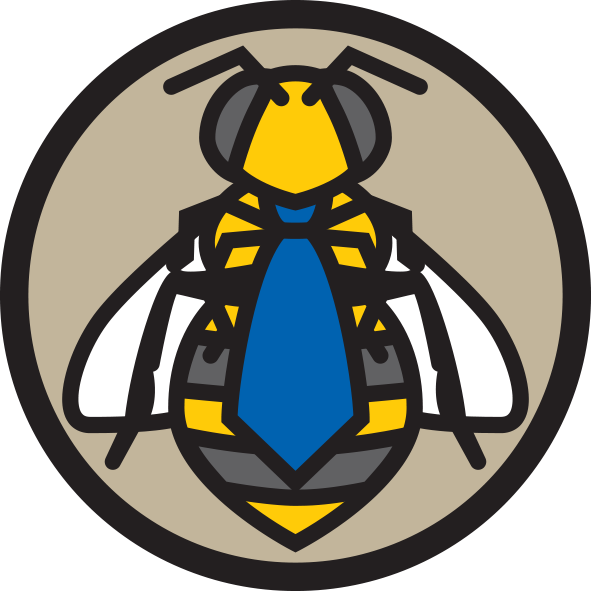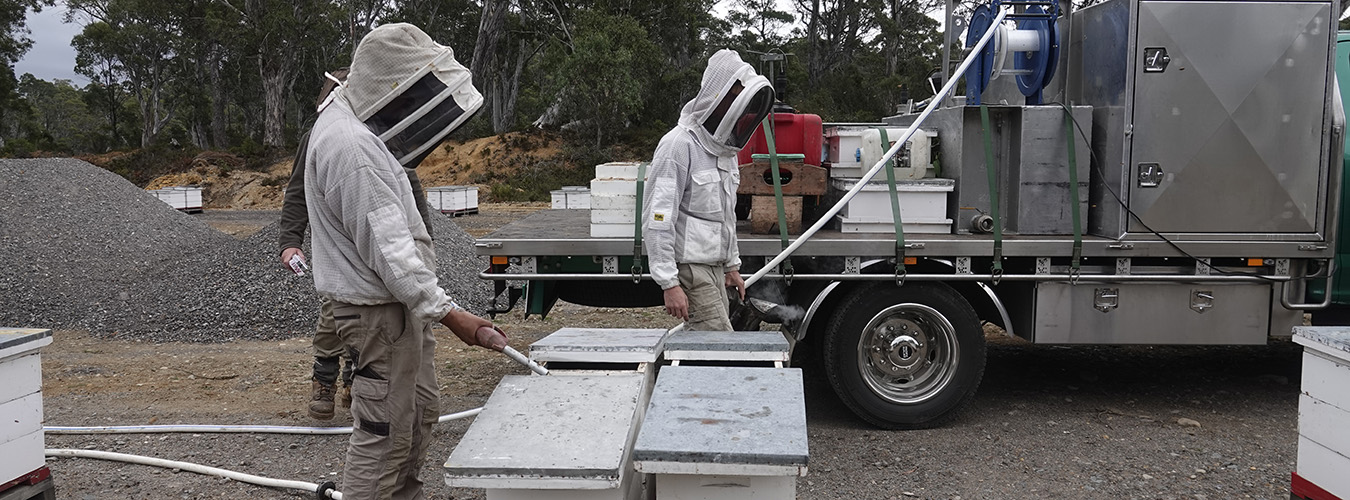In Australia’s extreme conditions, honey bee hives may require nutritional management when quality nectar and pollen aren’t readily available within a few kilometres of the hive. La Niña conditions continue to prove challenging for humans and hives alike. Starvation can affect hives at any time of the season if nectar isn’t available and malnutrition can happen even if nectar is in abundance, but pollen is of poor quality or low in quantity. So, what’s a beekeeper to do?
Many beekeepers in areas with intense and prolonged rainfall have had to consider supplemental feeding their hives in order to keep them healthy and prevent starvation. Remember, if it’s raining, honey bees are staying home and eating their reserves, taking care of the queen, developing bees, and regulating temperature and humidity in the hive. They are unable to go outside and forage for fresh nectar and pollen and replenish their food stores. Nectar is their critical carbohydrate source which, when available in abundance, worker bees store and ripen into honey. Pollen provides most of the protein, amino acids, fats, vitamins and mineral requirements of a bee’s diet.
Hives must contain fresh nectar or stored honey, critical in cooler parts of the year as worker bees eat honey or nectar to give them the energy they need to generate heat to keep the hive warm through cold periods. Ensure enough honey is left on the hive during any time of the season when flowering nectar sources are not available and especially in preparation for winter. This requirement will vary from location to location and is best determined through experience and with the help of local beekeepers.
Take a beekeeping course and join a club or work for a beekeeper to increase your local beekeeping knowledge exponentially.

Large scale beekeeping requires efficient nutritional management as shown here where thick syrup is pumped into internal hive feeders to stimulate storage for winter packdown in cold temperate locations.
Photo courtesy Elizabeth Frost

Open-feeding of protein supplement can be used in managing honey bee nutrition to keep hives in good condition when natural sources of quality pollen are scarce.
Historically, NSW, VIC and SA temperate zone beekeepers would ensure their hives were prepared to survive through winter by having enough honey stores packed away in each hive by Anzac Day 25 April. This benchmark is earlier for cold temperate Tasmanian beekeeping and later for subtropical Northern NSW and QLD. Like many things in beekeeping, this date is only a general rule, particularly in a country that at times has some Eucalyptus species flowering into winter like mugga ironbark (Eucalyptus sideroxylon) and grey box (Eucalyptus macrocarpa).
Regardless, autumn is a critical time of the season to assess hive food stores and whether they’re sufficient to last through winter and yield a healthy and productive hive on the other side for pollination or honey production.
Supplemental feeding of sugar syrup has been proven highly effective at keeping colonies alive through challenging periods of nutritional deficiency.
When someone asks me if I feed my bees I ask, do you feed your dog?

Honey bees collecting finely ground, irradiated pollen being open-fed in a drum.
Hive nutrition is often overlooked by new beekeepers, at the peril of their hives’ health. Some seasons I don’t have to provide any supplemental feed to my production hives, however, in others such as the recent drought and 2019-2020 bushfires, supplemental feeding was the only thing preventing many beekeepers’ hives from dying of starvation.
Pollen supplement can be sourced as irradiated, bee-collected pollen or pollen substitutes, fed within individual hives or open-fed as dry pollen supplements. White cane sugar (sucrose) is the most accessible sugar substitute for fresh nectar which bees can easily digest and can be fed dry or as syrup.
For small-scale winter feeding, dry white sugar may be placed on the inner hive mat above the brood frames and below the lid in hives that are too small in population to eat sugar syrup. For hives with larger populations, liquid syrup mixed at a ratio of 2 parts sugar to 1 part water (2:1 concentration of sugar and water by volume) can be fed internally. Syrup can be fed using a large number of feeder types such as: top feeder, frame feeder, Boardman feeder, division board feeder, or open bulk feeding.
More information on supplemental feeding and how to find a beekeeper mentor is available on the Department of Primary Industries ‘Honey bee’ website: www.dpi.nsw.gov.au/animals-and-livestock/bees
Losing hives will take a toll on your mental health, please ask for help if you need it.
Acknowledgements:
- This article was peer-reviewed by Madlen Kratz and Nadine Chapman.
- Photos courtesy Elizabeth Frost


